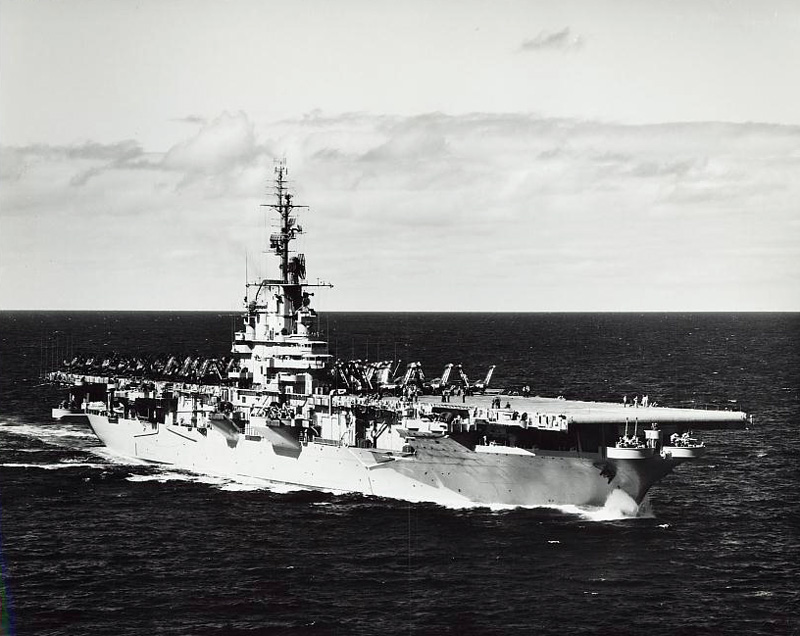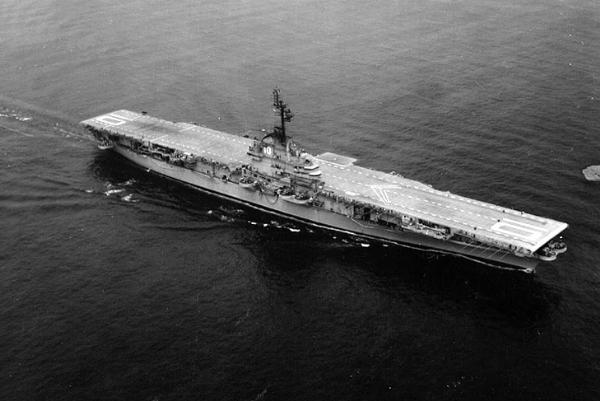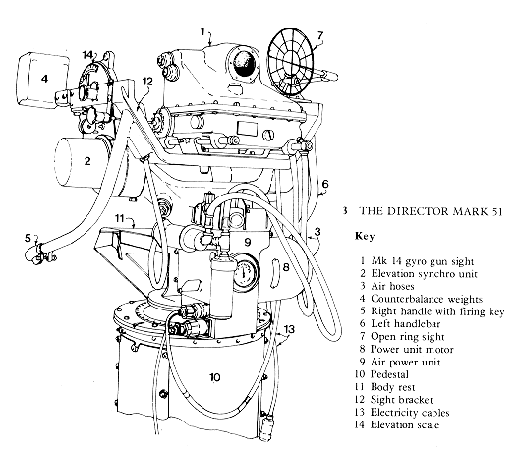
|
||||||||||||||||||||||||||||||||||||||||||||||||||||||||||||||||||||||||||||||||
The new carriers,require large ships for e fighting operation (decks hangar deck layouts, and fuel line distribution,) and speed Yorktown, class would finally benefit of all this lessons
To stay into the maximum tonnage allowed to aircraft by the 1921 Washington Treaty, (135 000 Tons ) Several options could be pursued on the basis of utilizing all this tonnage. Two carriers of the Lexington class could be build, or another option would make for three carriers of an intermediate size. A third option suggest the construction of two ships of 20.500 tons and another Ranger sized vessel, This solution allow the deployment of the carriers in pairs. Several factors were demanded to be considered in the design of the new carrier. First, higher speed 32.5 knots to operate alongside the new heavy cruisers. The aviation handling facilities, notably hangar and elevator size and arrangement were to be remodelled, as were protection and anti-air armament. In May 1931 initial planning show to construct a carrier of the desired characteristics on Ranger’s tonnage was virtually impossible. It was necessary to be included in the design of a new ship. Some features an armored flight deck, and a second flying-off level. The first proposition ( English Scholl ) was non retain because of weight and the second ( Japanase scholl IJN Akagi and Kaga ) also because under attack it was impossible to launch aircraft The lower deck would allow combined operations with the upper deck The upper deck, meanwhile, would be relatively short
In the end, hangar-deck catapults for launching planes broadside were installed, but only on the Yorktown At last the Yorktown class were single, long flight deck. While the time passed, the design was modified to follow the progress of technology. After much discussion, a longer flight deck was ordered, to support the increased take-off length of the newer, heavier planes. As Yorktown class were an excellent example of modern carrier design . With a sufficiently large island to house the fire-control for the artillery, air and ship control facilities, and, most importantly, the smokestack, the new vessels made the desired 32.5 knots, turned smoothly and tightly, possessed a large flight deck and could easily manage a ninety-plane air group with three center line elevators But they were vulnerable to torpedo attack by the conception of the hull. Both Yorktown (at Midway) and Hornet (at Santa Cruz) were severely damaged by Japanese torpedoes. Armament was little cause for discussion.
The surface-fire artillery ( 152mm ) present in Lexington class was changed by anti aircraft artillery Thus, the US standard was a 8 5 inch or 127mm guns and supported by a large total of 40 .50cal /12.7mm machine guns. But urgently required that new anti-aircraft guns, would be a vital addition to the vessels ability to stop approaching dive bombers .The Bofor 40mm was the solution . By the end of 1943, Enterprise and most other combatants in the US fleet bristled with 20mm( in spring 1942 ) and Bofors 40mm( late 1942) anti-aircraft guns, two of the most effective anti-aircraft weapons of the war. Armament was controlled by radar-and fire directors(added in 1943 ) so he give at the Enterprise the ability to beat back attacking aircraft in all weather, day or night Radar Installations Radar ("Radio Detection And Ranging") was a revolutionary development that eventually altered nearly every aspect of naval combat. Aircraft carriers generally employed air search and fire control radars. Air search radar probed for aircraft. While maximum range varied with the target's altitude and size, naval air search radar of the time was capable of detecting aircraft from 100 to 160 kms . Air search radar was often augmented with height finder radar - to determine a target's altitude and IFF (Identification Friend or Foe) systems USS Enterprise Radar
CXAM-1 Search Radar CXAM-1 was an improved version of the Navy's prototype search radar, the Yorktown was the first US carrier fitted with radar, a CXAM. Installations of CXAM-1 sets began in late 1941, with some sets remaining in service through 1943 description Wavelength 1.5 m Pulse Range 70 nautical miles/130km (bomber) 50 nautical miles/90km (fighter) 16 nautical miles/30km (battleship) 12 nautical miles/20km (destroyer) Scan rate 5 rotations per minute Accuracy 270m Weight 2300kg 500 kg only anten SC-2 Search Radar A second-generation air search radar, the SC-2 was approximately half the size of the CXAM-1. It included an integral IFF (Identification Friend or Foe) system and limited altitude detection capabilities. An SC-2 set was installed as Enterprise's secondary search radar in late 1942, mounted on the starboard side of her funnel. Description Wavelength 1.5 m Range 80 nautical miles (150 km) (bomber) 40 nautical miles (70 km) (fighter) 20 nautical miles (40 km) (battleship) Accuracy 90m/3 degrees Altitude accuracy 600 meters The SC-2 was the standard radar of the war, and models remained in use until 1963. K Search Radar Essentially an SC-2 with a larger (CXAM-sized) antenna. Capable of detecting a medium bomber at 30,000 meters and 100 nautical miles, He was installed during her fall 1943 refit at Bremerton, Washington, replacing the CXAM-1 set, along with an SM height finder. The SC-2 secondary search radar was retained Capable of detecting large aircraft at 30,000 meters altitude at 100 nautical miles . The SM height finder, located atop and at the rear of Enterprise's tripod mast, could detect large aircraft at 30,000 meters altitude at 50 nautical miles SM accuracy was 182 meters, or 150 meters in elevation Mk 33 Director A power-driven fire control director, capable of obtaining firing solutions for targets moving at up to 320 knots, or 400 knots in a dive. Designed and initially installed without fire-control radar. Two Mk 33 directors mounted in 1941 - Mid 1942 fore and aft of the island. Mk 33 directors with Mk 4 fire-control radar. The Mk 4 could detect large aircraft at up to 37 kms with an accuracy of 37 meters. It was less effective against low-flying aircraft and only capable of detecting large surface ships at 28kms Mk 37 Director A fully-enclosed, power-driven fire control director, designed to accommodate fire-control radar. In addition, certain components of the Mk 37 were located in armoured compartments below decks, including the firing solution "computer" itself. Capable of obtaining firing solutions for targets moving at up to 400 knots level speed, and up to 250 knots vertically Late 1943 - 1945: Two Mk 37 directors mounted fore and aft of the island, with Mk 12 fire-control radar. The Mk 12 could detect aircraft at 41 kms with an accuracy of 20 meters, or ships at 37 kms. Mk 51 Director
A simple, one-man director, equipped with an Mk 14 gyro sight. The gyro sight, developed at MIT, computed the gun's lead angle as the target was tracked by line-of-sight. Aboard Enterprise, Mk 51 directors initially controlled 40mm guns, but during her 1945 refit, additional Mk 51's were installed for directing the 5"/38 guns against close-in targetsLate 1943 - 1945: At least one Mk 51 director was installed, at the bow of the ship, connected to the twin 40mm gun at the same location. It appears that 4-6 other Mk 51 directors were installed at locations along the gun galleries, but this hasn't been confirmed1945 (post-refit): Four Mk 51 directors, each connected to one pair of 5"/38 guns, plus seven directors for control of individual 40mm mounts Directors and Fire Control Radar Fire (as in "gun fire") control radar was optimized to detect and track specific targets, forming a critical input to fire direction systems. Fire control directors solved the complex problem of aiming a weapon based on the target's range, speed and direction and the ship's own movement (including roll). The calculated solutions guided the aiming and firing of shipboard weapons. Typically, larger weapons - such as 5" and 40mm anti-aircraft weapons - benefited most from fire control radar, as they tended to engage their targets at long range and low rates of fire. Each of Enterprise's directors could provide range and direction data for two 5" gun groups. Following her 1943 refit, her directors could also be coupled to the quad 40mm guns to provide range data only Postwar Directors As part of her final refit in Puget Sound Navy Yard in 1945, Enterprise was fitted with 21 Directors and Fire Control Radar four Mk 57 directors for the 5"/38 guns and adjacent 40mm Bofors mounts, four Mk 63 directors, each capable of operating with two or three 40mm mounts, four Mk 51 directors for directing the 5"/38 guns to close-in targets, seven Mk 51 directors for control of individual 40mm mounts, and two Mk 37 directors in the island: Aircraft squadrons
Carrier-based air group naming conventions changed over the course of the war, reflecting changes in Navy command structure and security policies. Before World War II, air groups were named after the carrier on which they were stationed; hence, there was a Lexington Air Group, a Saratoga Air Group, an Enterprise Air Group, and so on. Squadrons in each air group were numbered with the hull number of the ship. For example, the Enterprise Air Group had four squadrons: VF-6 (fighters), VB-6 (bombers), VT-6 (torpedo bombers), and VS-6 (scout-bombers).Particularly during the hectic first year of the war, squadrons were frequently deployed wherever they were most needed, be it another carrier or an airfield, such as Guadalcanal's Henderson Field. Squadrons from Saratoga CV-3 and Yorktown CV-5 were assigned to Enterprise for short periods. Air Group 10's Fighting Ten was formed around airmen of Lexington CV-2 Air Group's VF-2 after that great ship was sunk at Coral Sea (7-8 May 1942). After the Battle of Eastern Salomon , four planes from Bombing Six were transferred to Wasp CV-7, while the remainder of Bombing Six and Scouting Five (formerly of Yorktown!) were stationed at Guadalcanal, as "Flight 300". During the Guadalcanal campaign, most squadrons began receiving mail addressed to their own Fleet Post Office (FPO) address, and not in care of the ship on which they served. As this policy began to take effect, squadron designations changed from (for example) Enterprise Air Group to Air Group Six.Later, for security reasons, squadron numbers were assigned at random, instead of by ship hull number. For example, the last three air groups to fly from Enterprise were Air Group Ten, Air Group Twenty, and Night Air Group Ninety. Enemy intelligence could no longer deduce a carrier's deployment from the squadrons it embarked. |
|
Droit d’auteur La plupart des photographies publiées sur ce site sont la propriété exclusive de © Claude Balmefrezol Elles peuvent être reproduites pour une utilisation personnelle, mais l’autorisation préalable de leur auteur est nécessaire pour être exploitées dans un autre cadre (site web publications etc) Les sources des autres documents et illustrations sont mentionnées quand elles sont connues. Si une de ces pièces est protégée et que sa présence dans ces pages pose problème, elle sera retirée sur simple demande. Principaux Collaborateurs:
Nb
de visiteurs:8743744 Nb
de visiteurs aujourd'hui:4606 Nb
de connectés:66
| ||||||||||||||||||||||||||||||||||||||||||||||||||||||||||||||||||||||||||||||





.jpg)
.jpg)
.jpg)
.jpg)
.jpg)
.jpg)
.jpg)
.jpg)


.jpg)
.jpg)
.gif)
.gif)
.gif)
.gif)
.jpg)
.jpg)
.jpg)
.jpg)
.jpg)

.jpg)
.jpg)
.jpg)
.jpg)
.jpg)
.jpg)
.jpg)
.jpg)